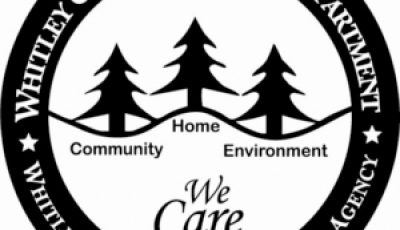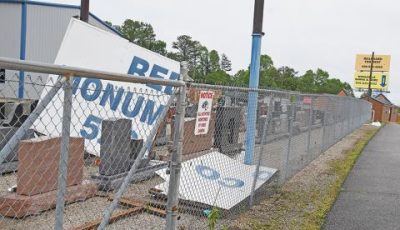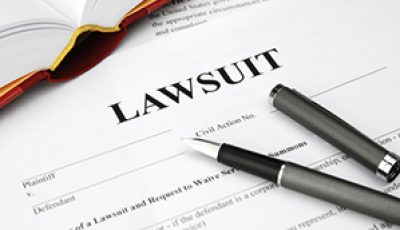Whitley County residents now eligible for FEMA assistance for July 31 flooding
Whitley County residents, who were affected by the July 31 flash flooding, should contact the Federal Emergency Management Agency (FEMA) to see if they qualify for federal disaster assistance.
 Leslie, Magoffin, Martin and Whitley counties are now eligible for FEMA assistance after flooding in Eastern Kentucky, and individuals and households in those four counties can apply for FEMA individual assistance, which may include temporary housing assistance, basic home repairs and certain other uninsured disaster-related needs, according to a FEMA release.
Leslie, Magoffin, Martin and Whitley counties are now eligible for FEMA assistance after flooding in Eastern Kentucky, and individuals and households in those four counties can apply for FEMA individual assistance, which may include temporary housing assistance, basic home repairs and certain other uninsured disaster-related needs, according to a FEMA release.
“It provides individual assistance for anybody, who is a resident in the county and had damage from the recent flooding. In order to get that, they need to register with FEMA and we need to hear from them,” said Nate Custer, a FEMA media relations specialist.
“If they have insurance then we also recommend that they call their insurance company. Unfortunately, there may be a lot of people without insurance. Flood insurance is separate from home owners. It is a separate policy. I can see situations where some people may be able to get some help on their home owner’s policy, such as if they some trees fall and they had some roof damage not caused by rising water.”
These four counties join Breathitt, Clay, Floyd, Knott, Letcher, Owsley, Perry and Pike counties, which were previously approved for individual assistance. The total number of counties eligible for individual assistance now stands at 12.
The affected area during the July 31 Whitley County flooding included the southern end of Jellico Creek Road across the mountain into Wolf Creek, Kensee Hollow, Sukey Hollow, Buck Creek, Ancil Leach Hollow and a small area in the Tackett Creek area. It sustained about two hours of unrelenting rain.
“Most of the people in that area estimated three or four inches of rain. It did some significant damage,” Whitley County Judge-Executive Pat White Jr. said previously.
Applying for assistance
Flood survivors can apply online at disasterassistance.gov, by calling 800-621-3362, or by using the FEMA mobile app. When you apply, you will need to provide:
- A current phone number where you can be contacted.
- Your address at the time of the disaster and the address where you are now staying.
- Your Social Security number.
- A general list of damage and losses.
- Banking information, if you choose direct deposit.
- If insured, the policy number or the agent and/or the company name.
After you register, you will get a call back from FEMA inspector in hopefully a matter of days. The inspector will make an appointment to come out and examine what happened, Custer explained.
For an accessible video on how to apply for FEMA assistance go to youtube.com/watch?v=WZGpWI2RCNw.
Flood survivors who apply for disaster assistance from FEMA may be referred to the U.S. Small Business Administration (SBA) for information on how to apply for a disaster loan. It’s important to submit the loan application as soon as possible. If your application is approved, you do not have to accept the loan but failure to return the application may disqualify you from other possible FEMA assistance.
Custer encourages people to also take photos of whatever damage that they have. Also, they should save receipts if they hired anybody to make emergency repairs because they might qualify for reimbursement from FEMA.
Possible DUA benefits
Gov. Andy Beshear announced Saturday that individuals in Whitley County may also qualify for Disaster Unemployment Assistance (DUA).
In order to qualify for DUA benefits, claimants in eligible counties must show that their employment or self-employment was lost or interrupted as a direct result of the flooding that began July 26 and that they are not otherwise eligible for regular unemployment insurance (UI) benefits under state or federal law.
DUA is available to individuals who:
- Worked or were self-employed, or were scheduled to begin work or self-employment;
- Can no longer work or perform services because of physical damage or destruction to the place of employment as a direct result of a disaster, which can also include the physical inaccessibility of the place of employment due to its closure by the federal, state or local government in immediate response to the disaster;
- Establish that the work or self-employment they can no longer perform was their primary source of income;
- Do not qualify for regular unemployment insurance benefits from any state;
- Cannot work or resume self-employment because of an injury as a direct result of the disaster; or
- As a result of the disaster, became the major support of a household because of the death of the head of the household.
Farmers and other self-employed individuals who are traditionally ineligible for unemployment insurance benefits may qualify for DUA.
To receive DUA benefits, the federal program requires individuals to provide documents, including a copy of their most recent federal or state income tax forms or check stubs, a bill showing their physical address at the time of the disaster and a photo ID.
Watch out for fraud
Custer is also warning people to beware of scam artists and fraud.
For instance, some people might offer to register someone for FEMA assistance if they pay them $50, which is something that should be reported to law enforcement.
Custer added that anyone, who talks to you claiming to be from FEMA, should have a photo identification badge.
He said that there may be some FEMA staff members, who will start circulating in the county with tablets to sign people up.
“It is just another form of outreach to get the word out. With the tablet they can register people right on the spot and answer their general questions about what it going on,” Custer said.








